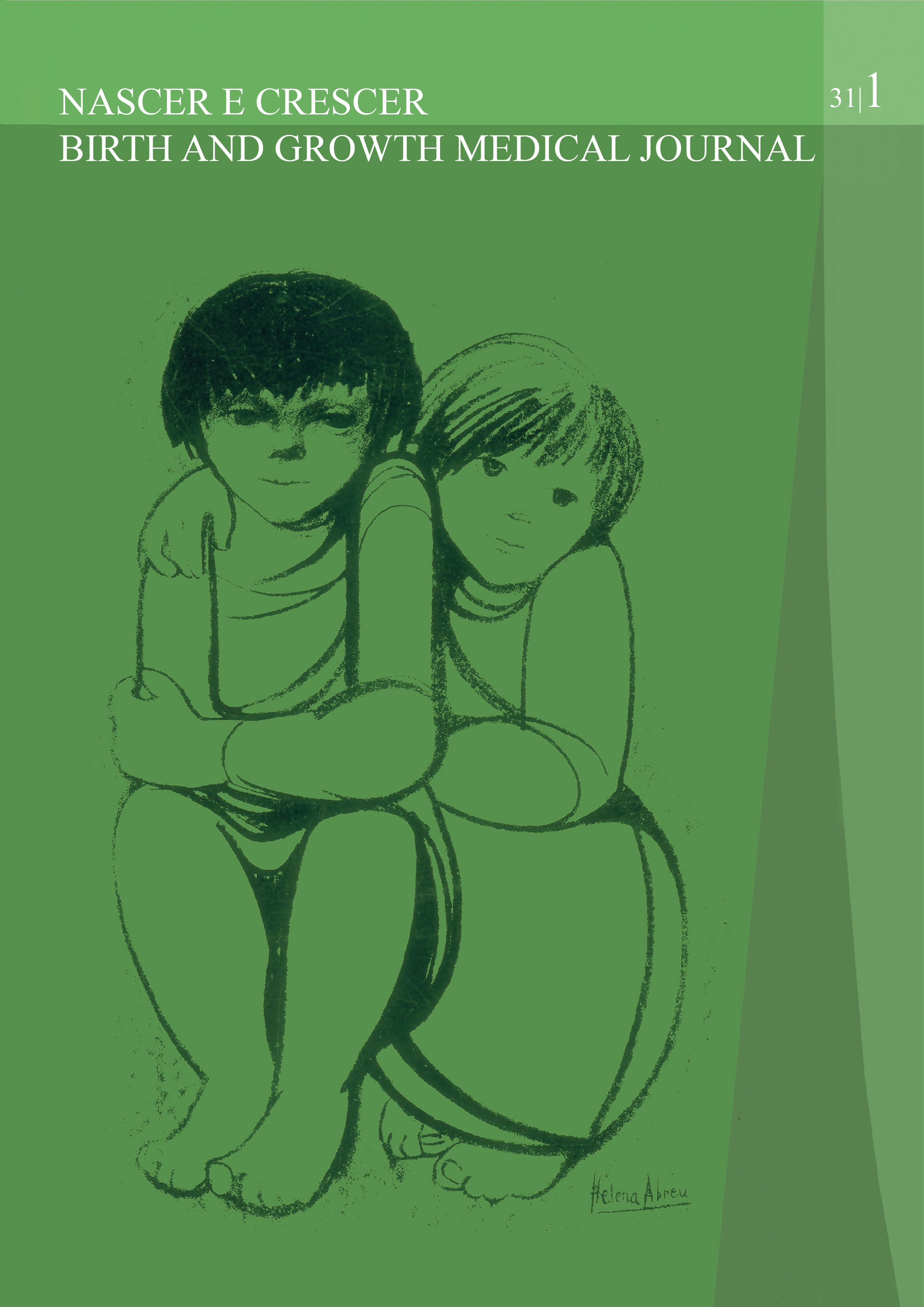A rare cause of axillary swelling
DOI:
https://doi.org/10.25753/BirthGrowthMJ.v31.i1.20729Keywords:
axillary swelling, ectopic breast tissue, surgical excision, urologic anomalyAbstract
Axillary swelling is a common condition in pediatric age. The most common diagnosis is lymph node swelling, but it can also be caused by soft tissue tumors, vascular lesions, or inflammation of sweat glands. In rare cases, it can be due to ectopic breast tissue (EBT).
A 14-year-old female presented with right axillary pain with one year of evolution and swelling for the past two months, gradually increasing in size, especially during menstruation. Sonography revealed EBT in both axillae, and further study showed duplication of the excretory system in both kidneys. The tissue on the right axilla was excised.
EBT should be considered in the differential diagnosis of axillary swelling in adolescents and young females. When the diagnosis is established, the presence of associated urologic anomalies should be investigated. Clinicians should be aware that EBT can undergo the same pathological changes as normally located breast tissue. Surgical removal should be considered for cosmetic and prophylactic treatment.
Downloads
References
Ritter L, Sorge I, Till H, Hirsch W. Accessory Breast Tissue (Mamma Aberrata) as a Rare Differential Diagnosis of Soft Tissue Swelling in the Axilla. Fortschr Röntgenstr 2013; 185: 74-5.
Laor T, Collins MH, Emery KH, Donnely LF, Bove KE, Ballard ET. MRI appearance of accessory breast tissue: a diagnostic consideration for an axillary mass in a peripubertal or pubertal girl. Am J Roentgenol 2004; 183 (6):1779-81.
Teixeira IP, Azzopardi C, Chowdhury R, Zsolt O, Castro M, Teh J. Ectopic breast tissue presenting as an enlarging abdominal mass. Radiology Case Reports 2020; 15: 733–40.
Singal R, Mehta SK, Bala J, Zaman M, Mittal A, Gupta G, et al. A Study of Evaluation and Management of Rare Congenital Breast Diseases. Journal of Clinical and Diagnostic Research 2016; 10(10): PC18-24.
Surd A, Mironescu A, Gocan H. Fibroadenoma in axillary supernumerary breast in a 17 years old girl: case report. Journal of Pediatric and Adolescent Gynecology 2016.
Navarro O. Soft Tissue Masses in Children. Radiologic Clinics of North Americ 2011; 49(6): 1235–59.
Burdick AE, Thomas KA, Welsh E, Powell J, Elgart GW. Axillary polymastia. Journal of the American Academy of Dermatology 2003; 49(6): 1154-6.
Kogut M, Bider M, Enk A, Hassel JC. Axillary Accessory Breast Tissue – Case Report and Review of Literature. Journal der Deutschen Dermatologischen Gesellschaft 2014.
Seifert F, Rudelius M, Ring J, Gutermuth J, Andres C. Bilateral axillary ectopic breast tissue. The Lancet 2012; 380: 835.
Gentile P, Izzo V, Cervelli V. Fibroadenoma in the Bilateral Accessory Axillary Breast. Aesth Plast Surg 2010; 34:657–9.
Guray M, Sahin AA. Benign breast diseases: classification, diagnosis and management. Oncologist 2006; 11(5):425-49.
Patel P, Ibrahim A, Zhang J, Nguyen JT, Lin SJ, Lee BT. Accessory Breast Tissue. Eplasty 2012; 12: ic5.
Alghamdi H, Abdelhadi M. Accessory Breasts: When to Excise? The Breast Journal 2005; 11(2): 155–7.
Amaranathan A, Balaguruswamy K, Bhat RV, Bora MK. AN Ectopic Breast Tissue Presenting with Fibroadenoma in Axilla. Case Reports in Surgery 2013.
Waldman RA, Finch J, Grant-Kels JM, Whitaker-Worth D. Skin diseases of the breast and nipple - Benign and malignant tumors. J Am Acad Dermatol 2019; 80: 1467-81.
Downloads
Published
How to Cite
Issue
Section
License
Copyright (c) 2022 Mafalda Moreira, Sónia Pinto Pereira, Ana Sofia Marinho, Berta Bonet, Sandra Teixeira

This work is licensed under a Creative Commons Attribution-NonCommercial 4.0 International License.
Copyright and Authors' Rights
All articles published in Nascer e Crescer - Birth and Growth Medical Journal are Open Access and comply with the requirements of funding agencies or academic institutions. For use by third parties, Nascer e Crescer - Birth and Growth Medical Journal adheres to the terms of the Creative Commons License "Attribution - Non-Commercial Use (CC-BY-NC)".
It is the author's responsibility to obtain permission to reproduce figures, tables, etc. from other publications.
Authors must submit a Conflict of Interest statement and an Authorship Form with the submission of the article. An e-mail will be sent to the corresponding author confirming receipt of the manuscript.
Authors are permitted to make their articles available in repositories at their home institutions, provided that they always indicate where the articles were published and adhere to the terms of the Creative Commons license.


